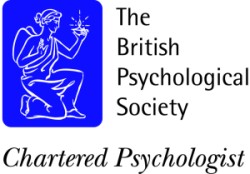There have been some major changes in the area of psychometrics of late. The main issue has been the move from Level A and Level B qualifications to the new Level 1, Level 2, and Level 3 qualifications.
Over the next few posts, we’ll help you navigate your way through the minefield of information about the changes.
To start with, we think it would be useful to let you know about the BPS’s Steering Committee on Test Standards (SCTS). Here we tell you what SCTS does by also including some historical information about the Committee.
The Steering Committee on Test Standards (SCTS) is a committee of the BPS responsible for all aspects of policy relating to standards of test use, including the development of the qualifications in psychological testing and for verification and quality assurance processes.
The SCTS was set up in 1987 as part of the process associated with chartered status. Before that, a Standing Committee on Tests and Testing had approved test user training courses on the basis of their curricula. When the new committee was established, it was agreed that a different route would be followed: the focus should move to the competence of the test user rather than the content of the training courses. In the 1980’s the SCTS developed a set of standards defining the competences required of test users (with an initial focus on occupational testing).
The occupational testing courses became Level A and the personality instrument-related training courses became Intermediate Level B. SCTS also defined a ‘Full Level B’ qualification to represent an upper benchmark on the competence of a test user.
The Steering Committee on Test Standards (SCTS) is a committee of the BPS responsible for all aspects of policy relating to standards of test use, including the development of the qualifications in psychological testing and for verification and quality assurance processes.
The SCTS was set up in 1987 as part of the process associated with chartered status. Before that, a Standing Committee on Tests and Testing had approved test user training courses on the basis of their curricula. When the new committee was established, it was agreed that a different route would be followed: the focus should move to the competence of the test user rather than the content of the training courses. In the 1980’s the SCTS developed a set of standards defining the competences required of test users (with an initial focus on occupational testing).
The occupational testing courses became Level A and the personality instrument-related training courses became Intermediate Level B. SCTS also defined a ‘Full Level B’ qualification to represent an upper benchmark on the competence of a test user.
The shift from course approval to competence-based qualification was made possible by the fact that chartered status provided a mechanism for quality controlling the assessment of competence. That is, those who were going to assess people’s competence for BPS qualifications would have to be chartered and hence accountable to the BPS. They would also have to undergo a process of verification whereby their assessment tools and procedures would be checked to ensure that they were adequately checking competence against the BPS’s standards. The verifiers were also chartered and were accountable to the SCTS.
The Occupational Level A qualification was introduced in 1991. It was the first qualification produced by the BPS for non-members and non-psychologists.
Well, that gets us started on our series of posts about the new changes to the qualifications. We hope that this post has been useful in helping to ‘set the scene’.
Barbara and Conor
PS: we would like to extend thanks to our colleagues Dave Bartram and Pat Lindley for some of the content included in this post (see Dave and Pat’s helpful article in ‘The Psychologist’: 2010, March, pp. 224-225).

